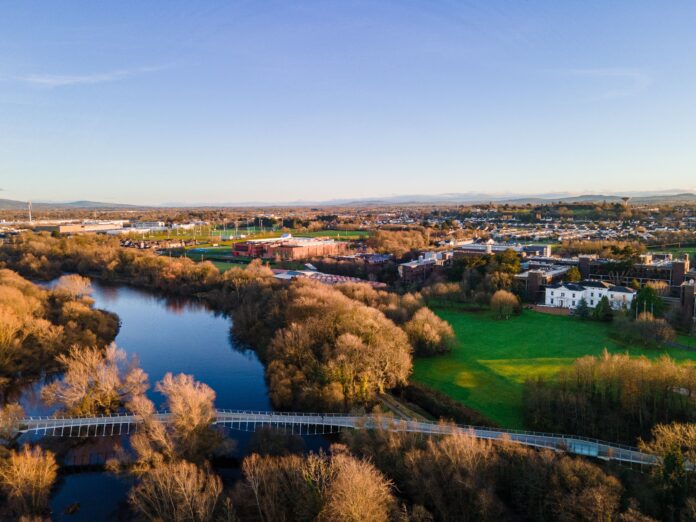
A NEW project by a University of Limerick researcher aims to locate, record and move towards the preservation of an ‘important heritage relic’ from nineteenth-century Ireland for the very first time.
Dr Catherine Porter, Associate Professor in Geography at UL’s School of History and Geography, is the lead researcher of ‘Locating Bench Marks, Preserving Heritage: A Community Initiative to Record County Limerick’s Ordnance Survey Heritage’.
The research project aims to identify, record and archive Ordnance Survey (OS) ‘bench marks’: measuring points first carved into Ireland’s built environment – typically on buildings, bridges or walls – between 1839 and 1843.
In order to do this, a user friendly app is currently being developed for members of the public.
It’s hoped the app will record those marks which are extinct and the locations of those which have disappeared.
“Bench marks, often referred to as ‘crow’s feet’ or ‘sapper’s marks’, were chiselled into Ireland’s landscape by the Ordnance Survey as part of a project to record height above mean sea level across the island”, Dr Porter explained.
“An important tangible heritage relic of the survey, that informs debates on contested heritage in Ireland, many have been destroyed or lost over the years due to demolition, development and environmental change,” she added.
Due to a lack of awareness and regard for this important form of heritage, bench marks are not afforded protected status in Ireland; and with no official statistics around their number or locations currently, Dr Porter says there is now an urgent need to raise awareness around their identification and preservation.
“For Great Britain, we have a good record of bench marks across the landscape, but for Ireland, we don’t know how many bench marks still exist; in fact, we don’t know how many were made. This project aims to change this by quantifying the loss of this significant cultural heritage,” said Dr Porter.
The project is funded by The Heritage Council and the Faculty of Arts, Humanities and Social Sciences and will use state-of-the-art digital technology to engage communities in identifying and recording bench marks in Limerick.
“It is our hope that through raised awareness we might move towards a greater recognition, preservation and protection of bench marks before they are lost forever. There are some avid bench mark hobbyists in Ireland, and we want to draw on their interest and that of other community groups,” added Dr Porter.


